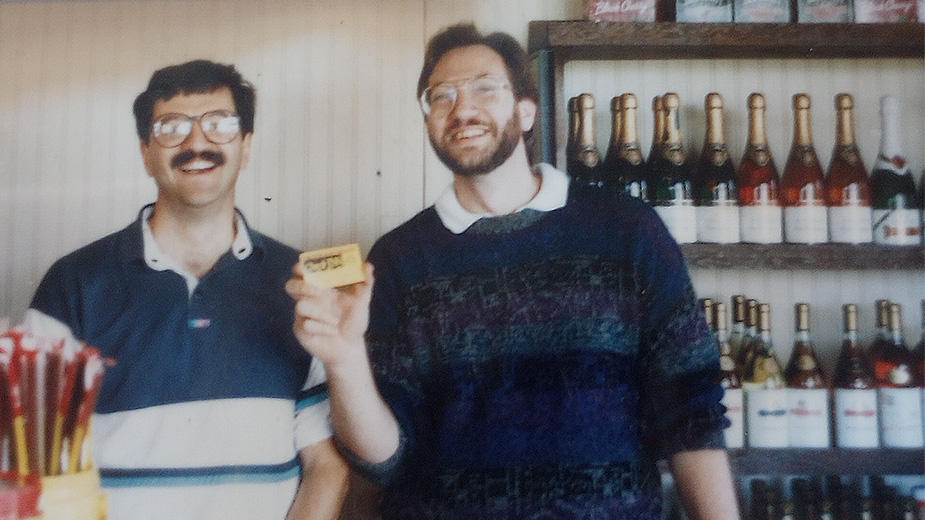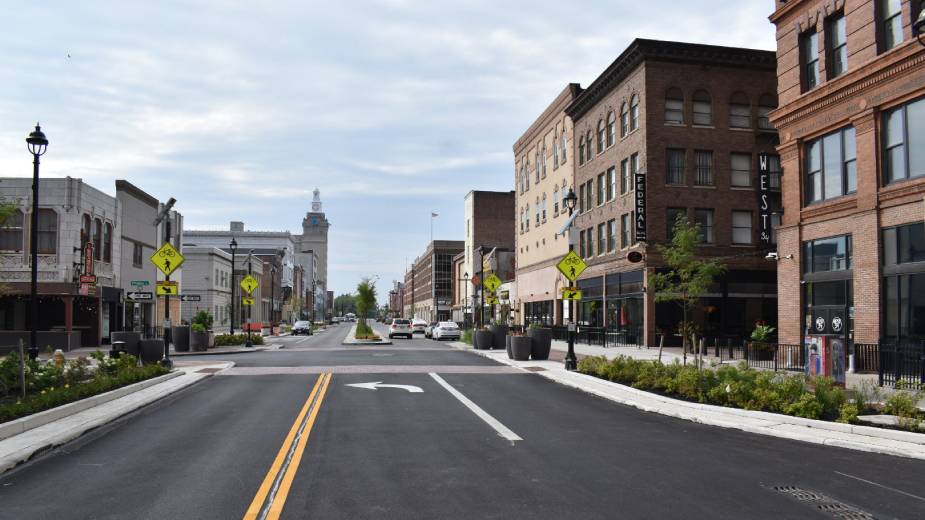Steel Museum Honors Legacy of Sheet & Tube Photographer Kelty
YOUNGSTOWN, Ohio – Percy Kelty’s career in photography started with a bang. The former Youngstown Sheet and Tube photographer joined the U.S. Army Air Force after graduating from Lincoln High School in Ellwood, Pa.
He trained as a bomber pilot in World War II, but eventually his talent with a camera landed him in Air Intelligence as an aerial photographer.
In June, Kelty died of COVID-19 in Columbiana at the age of 96. To pay tribute, the Youngstown Historical Center for Industry and Labor set up a small showcase in the museum’s lobby.
From steel workers in Youngstown to the beaches of Normandy, France, Kelty made a name for himself.
After leaving the Air Force in 1945, he worked for the Youngstown Sheet and Tube photography staff. In 1953, he took over for Walter Bartz, the company’s head photographer. Kelty worked for the company until its final years.
“There were actually only two chief photographers at Youngstown Sheet and Tube through its entire history,” said Tom Leary, history professor at Youngstown State University.
His work was prominently featured in Youngstown Sheet and Tube’s company bulletin, leading to some photography awards. The bulletin was originally created in the early 20th century as a way to maintain positive relations between the employees and management.
The bulletin survived the mill workers unionization in 1935 and the Little Steel Strike of 1937, where employees walked out from Republic Steel, Youngstown Sheet and Tube and Inland Steel.
As time passed, the bulletin went from a way to ease labor issues to a documentation tool. Youngstown Sheet and Tube used Kelty and his photographers to record new technology, floor designs and other facets of the company’s property. The photos were used for citation in case of an incident, public relations and promotion.
However, Kelty still found time to document the employees. Working, planning or on break, countless faces of Youngstown residents could be found in any monthly issue.
“Mill work was exciting and dirty and full of flames and sparks, but the people that worked there were husbands, wives, sons, daughters, grandfathers, grandmothers,” said Bill Lawson, executive director of the Mahoning Valley Historical Society. “There was that whole human side to being a family that survived and thrived in the industry here locally, and understanding what that meant in terms of where they lived, where they went to school, company-sponsored events for families.”
Kelty knew how to capture a moment or emotion with his black and white film. Those images became vibrant with the adaptation of color photography. Now the shots of liquid metal could be seen glowing bright red and the dirt covered skin seemed fitting of the blue-collar workers.
“You’re waiting for something that you know is going to happen and what you want is going to be there, and then it will be gone,” Leary said. “Your job, basically, is to make it possible for people to look at that photograph, and in a sense, be standing where you were standing at that one ephemeral moment when it looked the way that it did.”
The mills closed in 1977 and as time passed the memories of the steel industry lining the Mahoning River were slowly lost to time. The daily sights and sounds of a bygone generation. Kelty’s photos, which are sprinkled in history collections throughout Youngstown, keep those images alive for future history fanatics.
Kelty’s photography career spanned three decades. He experienced the Great Depression, World War II and the fall of the steel mills. Those experiences will live on through his work with a camera.
“That’s a lot of important territory to cover in terms of the history of the Mahoning Valley in the 20th century,” Lawson said. “Very dramatic upheaval and change decade by decade. And his lifetime bridged all that.”
Copyright 2024 The Business Journal, Youngstown, Ohio.


